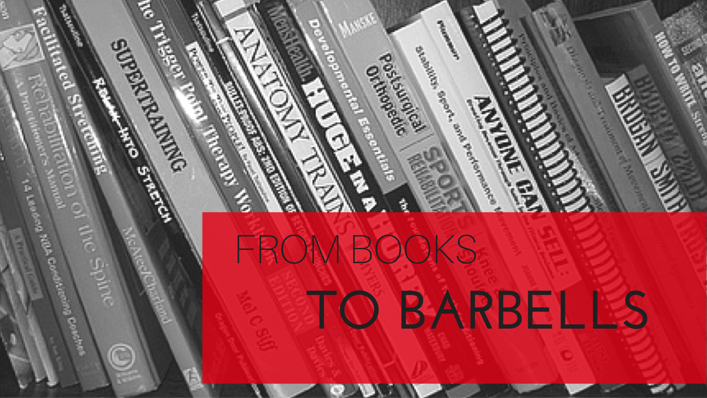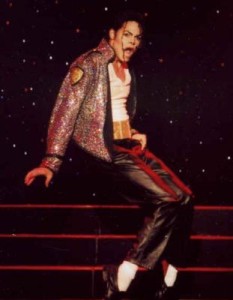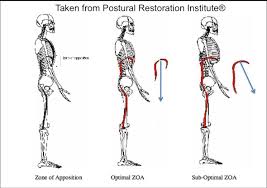 By Mike Reinhardt, IFAST Intern
By Mike Reinhardt, IFAST Intern
There are a few simple reasons that Indianapolis Fitness and Sports Performance (IFAST) has been named one of the top ten gyms in the nation. Over the years, they have created a welcoming, challenging, and accountable community for their members while simultaneously using their vast expertise to provide their clients with the greatest possible outcomes.
Every member is welcomed with unrelenting enthusiasm and encouragement from the moment they walk through the doors. This passion has created a thriving community of individuals seeking to better themselves and the quality of their lives.
Every member is welcomed with unrelenting enthusiasm and encouragement from the moment they walk through the doors. This passion has created a thriving community of individuals seeking to better themselves and the quality of their lives.
The last four months an intern at IFAST have drastically revolutionized and altered my understanding of coaching, training, movement, programming, rehabilitation , performance, communication, and psychology. From the very first day of my internship, I knew that IFAST was not your “typical” gym setting.
, performance, communication, and psychology. From the very first day of my internship, I knew that IFAST was not your “typical” gym setting.
The atmosphere is lively and intellectual. If a question is asked, no matter what the topic, a coach will do his absolute best to give an appropriate response.
There is always someone on the floor to assist the members through their individualized programs. Because of the close connections between members and staff, the coaches are generally aware of any potential issues or limitations that may need to be accounted for during the training session.
As one of the interns, it was my responsibility to progress a client through his or her program for that given day. Often, this involved teaching new exercises, cueing the individual into the proper position, answering questions, and selecting an appropriate level of difficulty for that person.
I learned quickly how clients with different goals, motivations, and personalities had to be encouraged, cued, and challenged in their own unique ways. For example, the approach to get a middle-aged fat loss client to squat an additional 10 pounds is most likely not the same method as for a high school football player.
However, as Coach Jae Chung told us the first day: the foundation for all training is having a solid relationship with each client. Mike Robertson taught us the concept of “n=1”: meaning no two people are exactly alike, so they should not be treated as such.
Throughout the first few weeks, we were instructed not to directly coach clients, but to focus on the creation of rapport. While this was not what I had in mind when applying for the internship, I now realize that developing this skill has been just as vital as improving my coaching abilities.
Furthermore, the diversity within the coaching staff lends itself numerous benefits. Jae Chung is an excellent communicator and a tremendous motivator. Ty Tyrell has an amazing eye for speed, agility, and athletics. Lance Goyke is a walking encyclopedia of fitness and an up-and-coming professional. Grant Gardis has been involved in the sport of weightlifting for decades. Mike Robertson has become a leader in the fitness industry through his speaking, writing, successful programming and coaching. Bill Hartman probably wrote the encyclopedia that Lance knows, but he is also a tremendous Physical Therapist with a knowledge base far greater than anyone I have met.
Each person has his particular skillset and style of coaching. As an intern, this has been an extraordinary benefit because the variation allows for the formulation of one’s own unique coaching style.
 For example, Jae Chung shared his famous “Michael Jackson” cue used to get someone to keep their hips tucked underneath them, preventing lumbar extension. It was not at all uncommon to hear Jae yell, “More Michael Jackson!” across the gym floor.
For example, Jae Chung shared his famous “Michael Jackson” cue used to get someone to keep their hips tucked underneath them, preventing lumbar extension. It was not at all uncommon to hear Jae yell, “More Michael Jackson!” across the gym floor.
Why am I telling you all this, you might ask? I am soon to graduate with a Bachelor of Science in Exercise Science from the University at Buffalo, and this summer I will begin my Doctorate of Physical Therapy.
However, if it were not for this internship, I could not imagine how unprepared for the professional world I would have been as a coach, trainer, or fitness professional. Going into the internship, I felt fairly prepared. I had worked as a personal trainer and I had coached group fitness classes for years, all with quite a bit of success.
As I learned very quickly, I had many areas to improve upon. The classroom provided me with an excellent background in physiology, anatomy, biomechanics, and theoretical training programs. However, classes alone did not provide me the desirable amount of hands on experience working with people, teaching exercises, coaching movement, assessing movement abilities, or addressing persisting issues and injuries.
Earning a degree does not automatically make you a “fitness professional”; it merely gives you the necessary tools to become one. There are thousands of individuals with a degree in Exercise Science or Kinesiology, so how do you stand out?
A story my father once explained to me pertains well to this situation. He told me of a professor who stood before his lecture hall with an empty jar, he then proceeded to fill the jar with rocks and asked the class if the jar was full. They all nodded. Next he filled the jar with smaller pebbles, again asking if it was full. They all nodded. Then the professor poured sand into the jar, asking if it was full. Again, they nodded. Lastly, the professor poured water into the jar. Once again, the class agreed the jar was filled. In my opinion, the classroom provides what Mike Robertson would call his “big rocks.”
In my analogy, a degree in Exercise Science or Kinesiology will provide the necessary “big rocks” of anatomy, physiology, exercise, and biomechanics. Unfortunately, there are many gaps of knowledge that exist within the spaces between the big rocks. This is when the smaller subunits of pebbles, sand, and finally, water come in to fill these gaps. Ultimately, the goal of any professional in their field should be to fill as many of these gaps in knowledge as possible.
IFAST taught me an uncanny amount of information, but just as importantly, it taught me what I did not know. Much to my surprise, there was (and still is) much that I was unfamiliar with. Oftentimes, information or topics were discussed that had never been mentioned in any of my courses or laboratories.
For the last few years, I have been an advocate of improving mobility as a means to improving health and performance. Unfortunately, most of the current methods to do so involve rigorous stretching regimens in hopes of making a muscle feel less “tight.”
Hamstring stretches are a perfect example of this: many people are unable to  bend over and touch their toes with straight knees, oftentimes blaming the hamstrings for being the restriction. The coaches at IFAST explained it is not an overly-shortened hamstring muscle that is the issue, but oftentimes a positional issue of the hip bone which impairs the desirable function of the hamstring.
bend over and touch their toes with straight knees, oftentimes blaming the hamstrings for being the restriction. The coaches at IFAST explained it is not an overly-shortened hamstring muscle that is the issue, but oftentimes a positional issue of the hip bone which impairs the desirable function of the hamstring.
This demonstrated that it is fairly easy to be unaware of the gaps in our knowledge if we fail to routinely challenge ourselves intellectually.
For instance, even Mike Robertson and Bill Hartman, the two owners with decades of experience, continually seek to learn and challenge their present style of thinking. Mike has provided the interns with numerous in-services, yet he is often the first to mention that at numerous points in his career, he has made mistakes that he learned from. Even to this day, he has followed up a well thought-out presentation by saying something like, “but I still want to work it out a bit better.”
Witnessing this level of unrelenting dedication to learn has deeply changed the way I look toward my professional career in Physical Therapy. Complacency is the enemy of success.
While an Exercise Science degree places a tremendous focus on scientific reasoning and principles, there is limited development of interpersonal skills, coaching abilities, and business skills.
IFAST is successful for these very reasons. Its coaches are highly educated, but just as importantly, they are skilled communicators.
They are able to put clients in the most effective position in a short amount of time using language, demonstration, and concise guidance. Additionally, they are able to explain the rationale for each exercise prescribed to a client.
As a comparison, I remember one undergraduate course in which we watched a handful of NSCA’s exercise instruction videos. The videos clearly demonstrated and explained technique, cueing, and common errors for squats, lunges, deadlifts and an assortment of other exercises.
Later, we were asked written questions on an exam concerning these videos. There is one glaring problem with this: there was no actual coaching taking place. It is absolutely necessary to know what these lifts should look like, but it is a whole different challenge to ensure that they do.
Within my first few weeks, I remember watching a grandmother knocking out trap bar deadlifts with relative ease and beautiful form. She was strong, moved well, and felt great in her daily life. For me, that was the epitome of success from a coaching standpoint.
If a coach or therapist is unable to do this effectively, the client is at a serious disadvantage. This is where IFAST truly contributed to the honing of my coaching abilities. IFAST’s level of individualized training, attention to detail, focus on continuing education, and coaching prowess sets it far above any other facility I have ever seen.
Does all of this mean that I regret pursuing a degree in Exercise Science? Absolutely not.
My peers and I all share a similar passion for improving the performance and the health of the human body. As I have mentioned, the degree provides the necessary groundwork for success—but it is then left to the individual to build upon that framework.
The current educational model is lacking in a few of these important details, but those that are able to routinely practice and apply their classroom knowledge in a useful and efficient manner, will quickly begin making a difference in the lives of others.
If you happen to be pursuing, or are considering pursuing, a degree in Exercise Science, do not be discouraged. The classroom will provide you with a tremendous foundation, and it will be up to you to continue developing and refining your skills.
However, I do believe that this 16-week internship at IFAST has greatly added to my undergraduate education. If you hope to be the best at what you do, strive to learn from the best. Seek an internship with professionals that have been well established in their field for years.
Nothing shows passion like endless hours of unpaid labor, but this is what it takes to learn the practical side of training and fitness. If you are dedicated to excelling in this career, it will be time well spent.
Not only this, but a good internship site will allow you the opportunity to make a real difference in someone’s life. You may be a contributing factor in a grandfather’s ability to lift up his grandchildren without back pain. You may be the coach that instills positive training principles and movement patterns in young athletes, lending to their future success. You may be the person that helps a client live longer and with a high quality of life by losing weight and addressing lifestyle choices.
These are all very real possibilities when knowledge is applied alongside hours of repetition. Success truly lies outside of your comfort zone. Be willing to fail, as it will set you up for success later on. I firmly believe that my experiences here at IFAST will not only make me a better coach, but will also play a vital role in my impact as a Physical Therapist.
